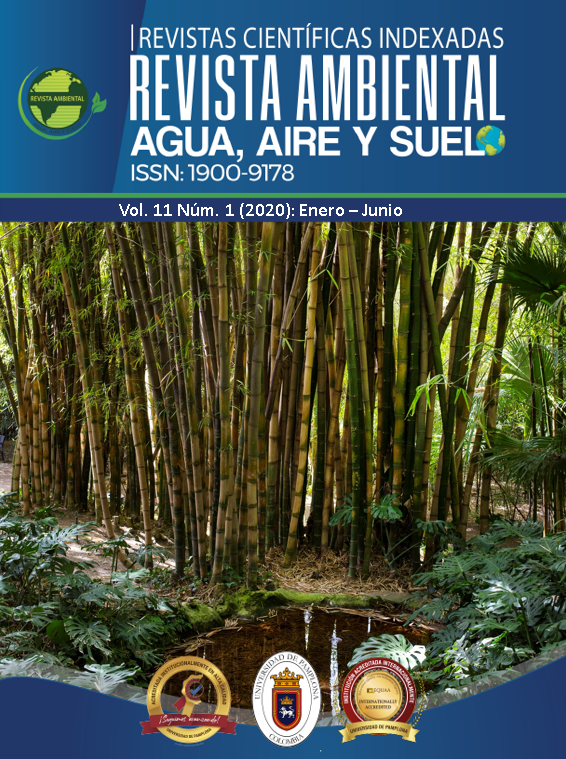Evaluation of biological alternatives for controlling ASCOCHYTA SPP. in pea cultivation, Pamplona, Norte de Santander
DOI:
https://doi.org/10.24054/aaas.v11i1.353Keywords:
Pisum sativum, Trichoderma, microrganismos eficientes, medio ambienteAbstract
Ascochyta blight is a serious disease affecting peas in Pamplona, Norte de Santander, which requires frequent use of chemical fungicides despite reports of the possibility of using biological control methods. The objective of this research was to evaluate the effectiveness of biological alternatives for the control of Ascochyta spp. in pea cultivation (Pisum sativum) under the conditions of Pamplona. An experimental study was conducted, evaluating six treatments: three with biopreparations produced by the Association of Agricultural Producers (ASPAGRO), alone or in combination; a commercial antagonist (Trichoderma harzianum); a chemical treatment with benomyl; and a control. The incidence of the disease and the Area Under the Disease Progress Curve (AUDPC) were determined. In addition, the number of pods per plant, the number of seeds per pod, the weight of 10 seeds, and the yield were compared among the treatments. The ASPAGRO Rhizosphere Broth biopreparation and the commercial Trichoderma-based biopreparation reduced the incidence and AUP of the Ascochyta spp. complex in peas in a similar way to the chemical fungicide benomyl, with crop yield levels similar to those of the chemical treatment.
Downloads
References
Agrios, G. (2006). Plant Disease. New York: American Phytopathological Society, 98(6), 1117-1128.
Angulo, W. J., Mendoza, J. A., & Uriel, H. U. (2017). Análisis de la vulnerabilidad por fenómenos de remoción en masa en la Cuenca Tanauca: Estudio de caso. Revista Ambiental Agua, Aire y Suelo, 8(2). https://doi.org/10.24054/19009178.v2.n2.2017.3276
Cáceres, G. P., & Gelves, D. Y. M. (2013). La producción de arveja (Pisum sativum) en la vereda Monteadentro, provincia de Pamplona, Norte de Santander. Face: Revista de la Facultad de Ciencias Económicas y Empresariales, 11(2).
Camargo-Cepeda, D. F., & Ávila, E. R. (2014). Efectos del Trichoderma sobre el crecimiento y desarrollo de la arveja (Pisum sativum). Ciencia y Agricultura, 1(1), 91-100.
Camargo, W. C. (2016). Modelación hidrológico-hidráulica de eventos de inundación en el Río Bogotá (sector Tocancipá-Chía) usando HEC-RAS. Revista Ambiental Agua, Aire y Suelo, 7(2). https://doi.org/10.24054/19009178.v2.n2.2016.3267
Campbell, C. L., & Madden, L. V. (1990). Introduction to Plant Disease Epidemiology. New York: John Wiley & Sons.
Castellanos, L., Céspedes, N., Sequeda, A., Jaime, J. E., & Niño, L. J. (2018). Caracterización microbiológica de cinco biopreparados artesanales. Revista Científica Agroecosistemas, 6(3), 57-65.
Cesnuleviciene, R., Gaurilcikiene, I., & Ramanauskiene, J. (2014). Control of Ascochyta blight (Ascochyta complex) in pea under Lithuanian conditions. Zemdirbyste, 101, 101–108. https://doi.org/10.13080/z-a.2014.101.01
Eraso, C., Acosta, J., Salazar, C., & Betancourth, C. (2014). Evaluación de cepas de Trichoderma spp. para el manejo del
Downloads
Published
Versions
- 2023-07-19 (2)
- 2020-06-30 (1)
Issue
Section
License
Copyright (c) 2021 REVISTA AMBIENTAL AGUA, AIRE Y SUELO

This work is licensed under a Creative Commons Attribution-NonCommercial 4.0 International License.










